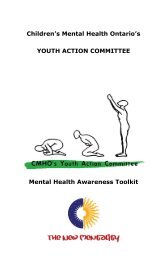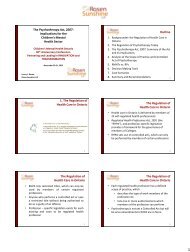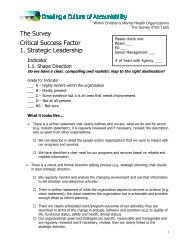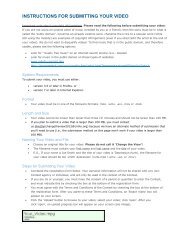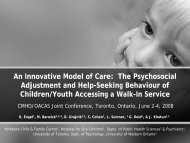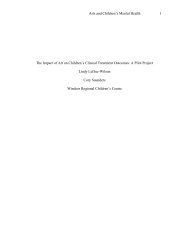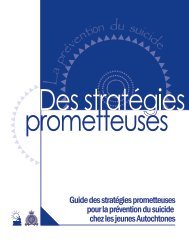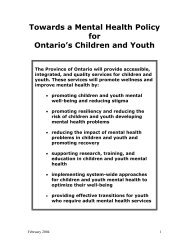Early Childhood Mental Health Treatment: Training Reference Guide
Early Childhood Mental Health Treatment: Training Reference Guide
Early Childhood Mental Health Treatment: Training Reference Guide
Create successful ePaper yourself
Turn your PDF publications into a flip-book with our unique Google optimized e-Paper software.
FAQ’s<br />
& <strong>Guide</strong>d Reflection<br />
Attachment<br />
Q: Researchers are now trying to understand the short and long term implications of attachment.<br />
Can attachment patterns change over time<br />
A: Yes. Interventions during the early years are based on the assumption that if early attachments<br />
can be altered the trajectory of long term attachments and new attachments will also<br />
be altered<br />
Q: What should the focus of therapy be – the parent, the child, or the parent and the child<br />
A: We now know that the most effective therapy focuses on the parent-child (Lieberman, 2001).<br />
This does not mean that additional therapy focused on the child cannot be part of the intervention<br />
plan, but generally in order to maintain positive changes within the child, the parent<br />
will need to be involved.<br />
Q: I see many parents who seem unable to recognize the cues their child is giving them.<br />
Can this be changed<br />
A: Yes. Research shows through infant-parent psychotherapy and interactional guidance, parents<br />
can begin to better recognize their child’s cues and respond to these cues in a consistent<br />
manner.<br />
Q: Can I use the interventions described in this chapter<br />
A: No. Each of the interventions described requires training by certified trainers. If you do not<br />
have the training necessary, you may wish to consider the inclusion of a certified therapist in<br />
your team.<br />
Q: When working with a child who has an insecure attachment, should I also be concerned<br />
about other areas of development<br />
A: Yes. It is always advised to use an holistic approach to working with children and families. An<br />
attachment disorder may have an impact on other areas of development that should be<br />
considered in a treatment plan. Developmental measures are listed in the Screening and<br />
Assessment section.<br />
17



